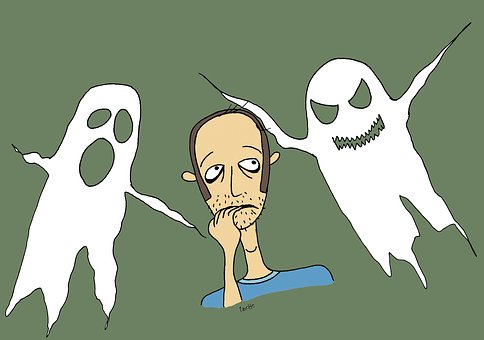Helping You to Understand Anxiety and Panic Attacks
Category : Uncategorized
Helping You to Understand Anxiety and Panic Attacks
Over the last few weeks and months I’ve seen a big increase though my therapy practise of people suffering anxiety or panic attacks.
A lot of people complain of very similar symptoms such as racing heart beat and a feeling on being on edge all of the time among other things.
So what happening to cause people to feel like this?
First of all it will be more than likely start with something internally like negative dialog, which will create a picture in the mind. These two things together then create or start the process of creating a negative and most unwelcome feeling.
So the process starts at a neurological level in the brain. It could be argued that anxiety itself is its own neurological symptom. After all, anxiety can change neurotransmitter levels in your brain causing them to send unusual signals to the rest of your body that actually effect all your nervous systems and causes real sensations/symptoms.
The forebrain is the area most affected in people with anxiety and panic attacks disorders. The limbic system, which is involved in storing memories and creating emotions, is also thought to play a central role in processing all anxiety-related information. Both the locus coeruleus and the dorsal raphe project to the septohippocampal circuit, which in turn projects to other areas of the limbic system that mediate anxiety. The hippocampus and amygdala are of particular importance, as they are interconnected and also project to both subcortical and cortical nuclei. The amygdala fires off the fight, flight or freeze reaction in the brain then floods the body with adenine. It is the increased activity of the amygdala that causes the symptoms of anxiety and panic. It acually happens like this freeze, fight or flight.
Normally after each anxiety event, the amygdala resets itself to a normal level. But if we continue to experience anxiety or stress over a long period of time, our amygdala is modified and becomes fixed at a high anxiety level. In other words it is in the on position and needs to be switched off.
So it is a very real problem for some people. I think that a panic attack is anxiety but a much stronger reaction, anxiety that has been allowed to grow and become somewhat out of control. A friend who was a nurse in A&E in a local hospital said that 99% of people admitted to hospital who think they are having a heart attack are actually experiencing a panic attack
Anxiety and panic attacks can be cause by increased stress and inadequate coping mechanisms may contribute to anxiety.
One of the best ways to help yourself is to try deep breathing exercise every day for around 10 – 15 minutes at time.
How to do Deep Breathing Exercises:
- Find somewhere comfortable where you will not be disturbed during the exercise, if necessary tell who you live with family etc than you don’t want to be disturbed and to be considerate to your needs.
- Lie down or sit in a comfy chair, place your hands on your lower stomach. Breathe in through your nose so that your stomach rises, this mean than you will be breathing from the bottom of the lungs not the top. Hold the breath for a couple of seconds then slowly breathe out.
- Repeat these 3 or 4 times then allow your breathing to go back to normal.
- Concentrate on different parts of the body allowing these to relax one by one starting with the top of your head and working all the way down to the tips of your toes. Image you are in a wonderfully relaxing a safe place, I like to think of myself lying on a beach sunbathing.
- Just allow yourself 10 to 15 minutes of relaxing this way every day making part of your lifestyle. Try not to fall asleep as relaxation is different to sleep so you don’t want to associate relaxing with going to sleep although you may find it hard not too drop off at first.
If you feel you need a little more help then please contact me via the website or the office telephone number. www.blhypnotherapy.co.uk or contact me HERE
I am available for one to one or Skype (adam.cowming) therapy sessions if you can’t get to my office in person.
Regards
Adam



















